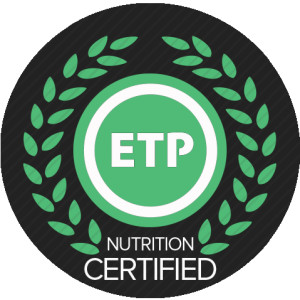I work hard to stay educated on nutrition and ways to maintain optimal health naturally. After sifting through all the marketing, the studies, labels and latest trends, I don’t always think about the environmental toxins that we encounter daily.
We try our best to clean up our diet, lessen the burden on our bodies to stay healthy, and yet, many times, we forget that toxins are all around us. We breath them in, bathe in them, slather them on, and wash our dishes, floors and clothes with them. With our skin being the largest organ we have, this is a massive assault on our bodies. Many allergies, skin issues, breathing issues, and other reactions to the chemicals in our everyday products, can be remedied when the toxins are minimized.
So why not start at the obvious. Your home. I’m particularly spending some time right now, detoxing my home and finding better cleaning products. Because who doesn’t love cleaning, right? If you’re like me, you put it off until you finally admit it’s completely gross (which is actually about every 10 minutes, with 2 toddlers), you’re completely bored (a rarity), or you’re procrastinating on some other tedious task that needs to get done. When I finally do get around to it, I at least want to make sure I’m not making my home a toxic war zone. Here are my 3 favorite resources for getting the chemicals out.
NORWEX
Which brings me to the most recent, exciting discovery I’ve had in the, chemical free home challenge. A friend invited me to her home to hear about Norwex. Since I’m always interested in learning about natural products, I was happy to have the opportunity to hear about it. In about an hour, I was convinced that this company rocks. From antibacterial kitchen towels, to cleaning paste, veggie and window cloths and seriously amazing mops, I wanted it all. They don’t just help you attain a chemical free home, they’re also concerned about reducing our waste and negative impact on our environment. There are reusable straws, produce bags, and dryer balls (so you don’t need chemical laden dryer sheets) in their catalogues as well. To be clear, I do not sell or have any affiliation with this company. I researched their products and I’ve used them for about a month now, with great results. I was open to the product line, because I was getting so frustrated going to a natural food store, thinking the products would be chemical free, only to be completely disappointed (and annoyed), when I realized many of them were garbage. Then I either knowingly used products that I knew weren’t that good, or I wasted money on a product that I refused to use. I felt like I could breathe a sigh of relief seeing all of the clean norwex products, that weren’t trying to hide anything with false labeling and crafty marketing. To check them out and see for yourself, go to Norwex. Katie is such an amazing resource for these products and can answer any questions you have (trust me, I have asked her a ton!).
My Favorites (so far)
1. The veggie cloth
2. The dryer balls
3. The Enviro Cloth
4. The window cloth
5. The cleaning paste
Product Reviews at EWG
The other place I have discovered is the Environmental Working Group. I go to this site at least a few times a month to check products. This site covers tons of different products, from bath and kitchen products, to cosmetics, sunscreens, light bulbs, and produce. They are well known for the dirty dozen, the list of the 12 most highly sprayed fruits and vegetables. The list has now become more encompassing and ranks 48 fruits and vegetables from the most sprayed, down to the least. I highly recommend anyone that is looking to clean up their fridge, and their environment, to check them out and make them a regular resource. Their rating guide for household cleaners is invaluable. I was surprised at how many of the natural food stores carried products that didn’t make the grade.
4 Favorite Products ( all with an A rating)
1. Planet dishsoap
2. Aussan all purpose cleaner
3. Arm and Hammer baking soda (great on its’ own, or for making your own cleaners)
4. Simple Green glass and Surface
Make it Yourself
For those of you looking to save money and control all of your ingredients, making your own cleaning products is a great option. Some lemon juice, baking soda, and vinegar, go a long way in cleaning your home, saving you money, and reducing toxins. A great list of homemade recipes can be found here. The only downside (I see) to making your own cleaners, is the added time, but most of them are pretty simple to make. The monetary savings of making your own can be huge, so why not give some of them a try?
My 5 Favorite Recipes
1. Easy homemade laundry soap (#14)
2. The best stain remover (#16)
3. 1 Ingredient crayon remover (#25) I use Young Living oils
4. Wool dryer balls (#31) you can also order them from Norwex
5. Fruit and veggie wash (#43)
It only makes sense to start looking at the products you buy to clean, bathe with, slather on and breathe. Caring about your environmental health is a natural progression from starting to pay attention to your food supply. It’s the logical next step in making positive changes for your health, and the ones you love!
Whatever you’re doing, to live a healthy life, you’re doing great. It sometimes seems there’s always a new diet, a new study, or a new toxin that we need to know about and completely eradicate from our lives. It can get overwhelming and impossible at times. Do what you can, forget the rest (or at least don’t stress about it), reserve judgment, and keep on moving. Don’t forget to enjoy the journey!
Seize Every Moment!
Anyone have a product line you love and swear by? I’m always open to new ideas and information!













